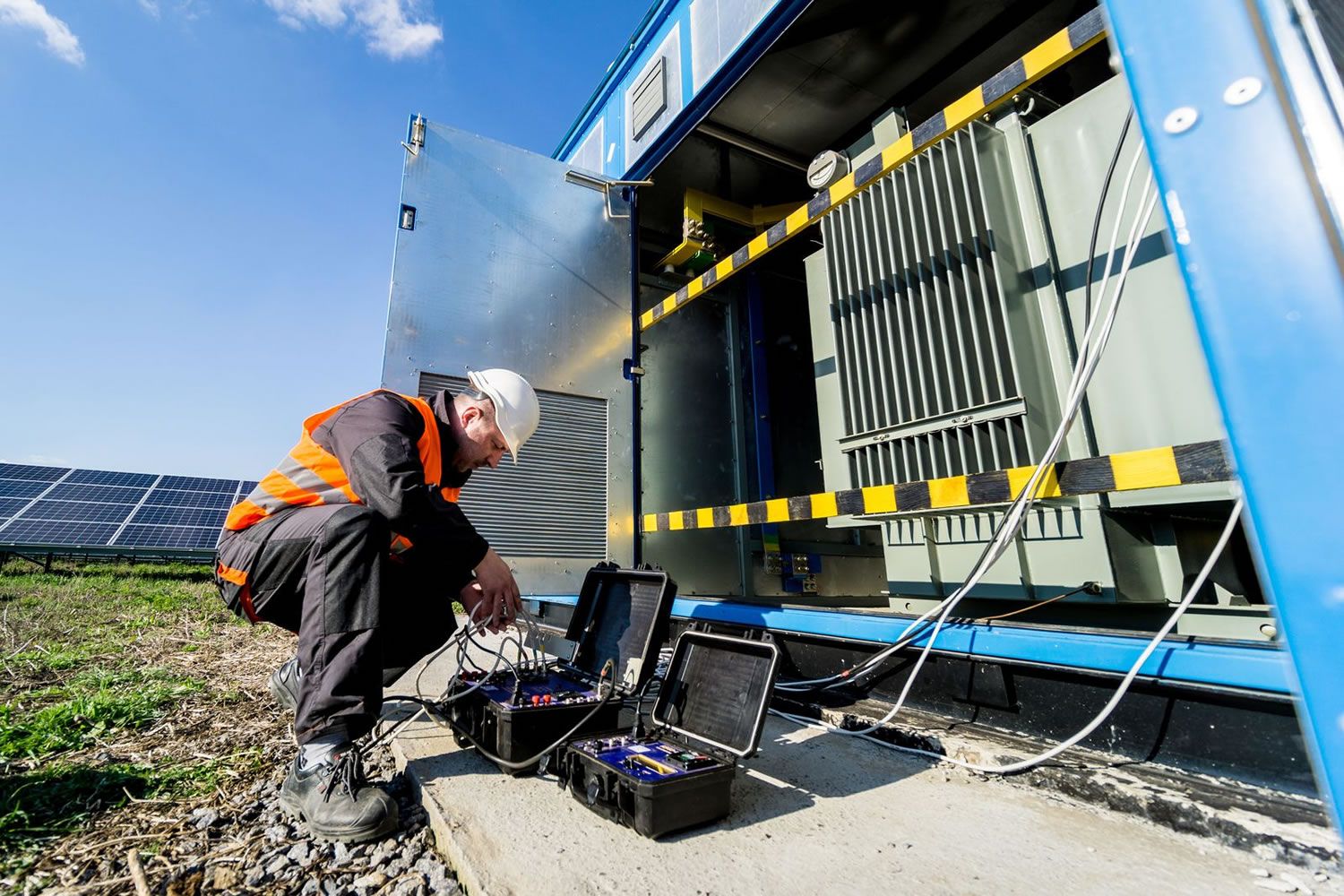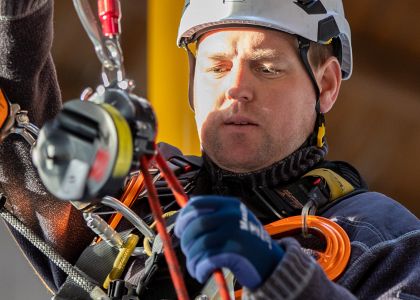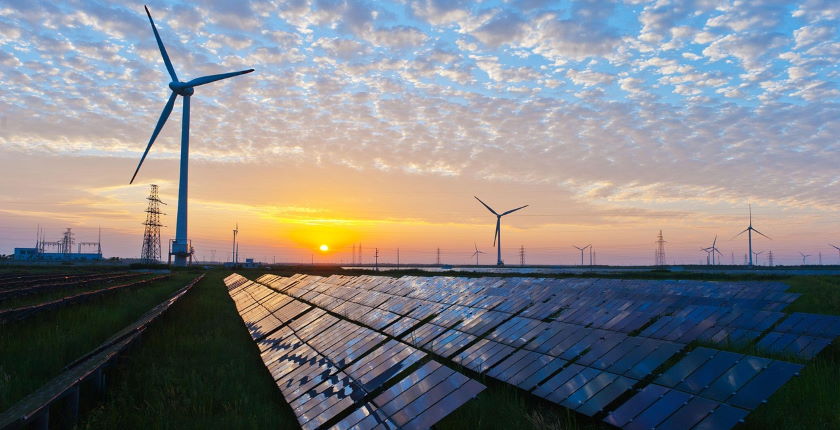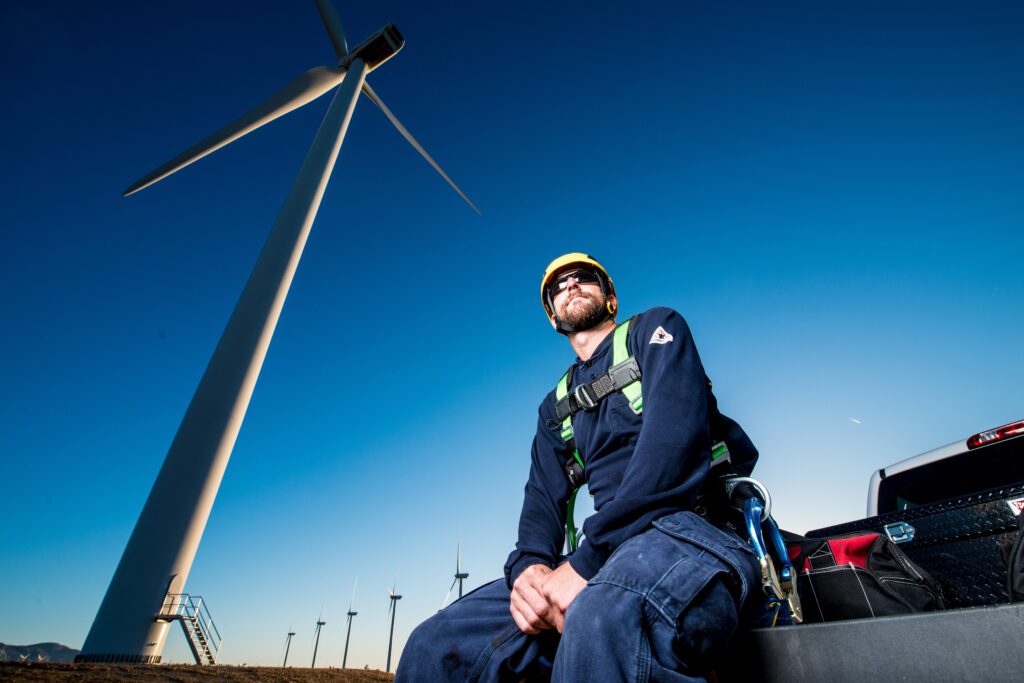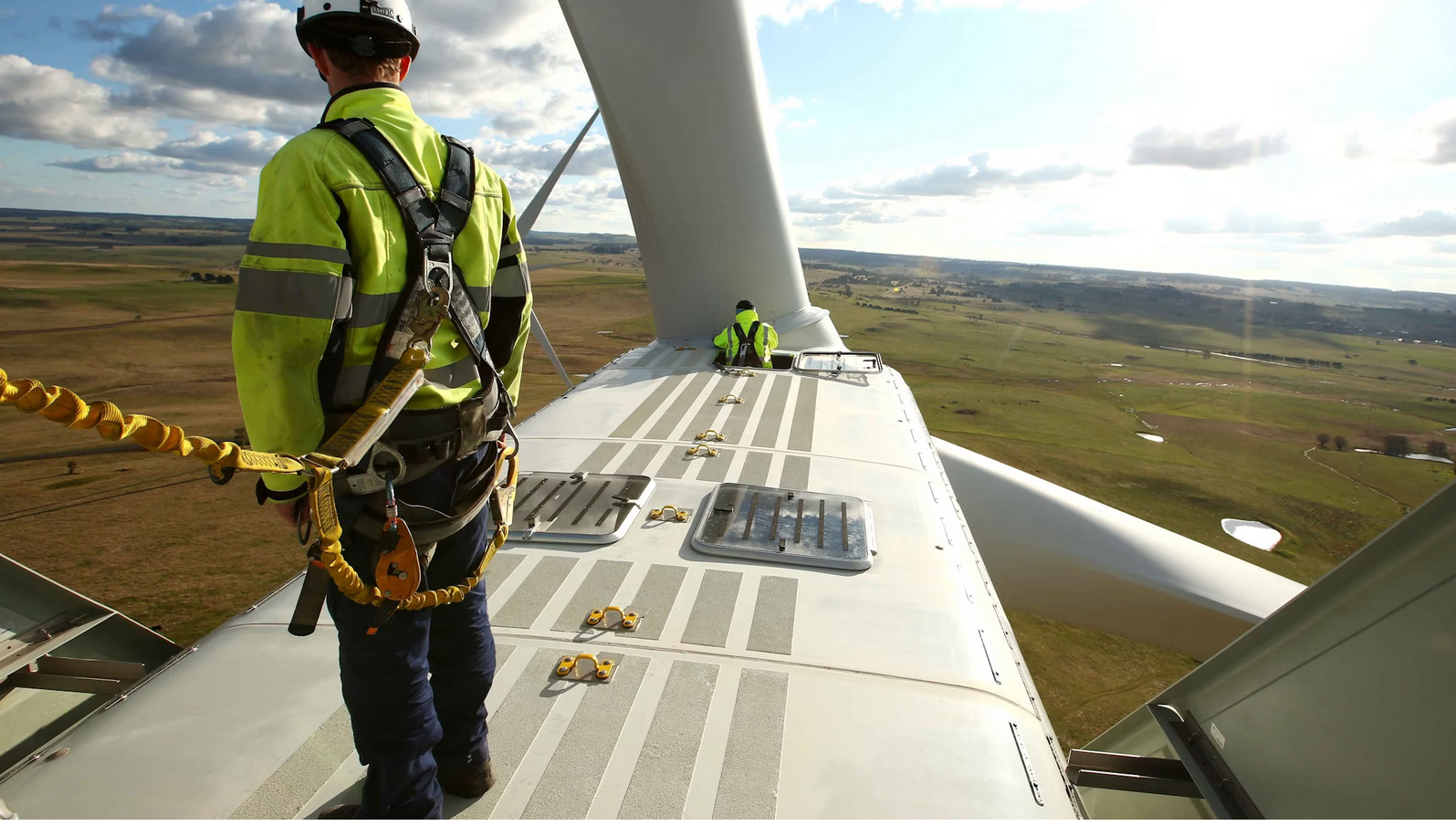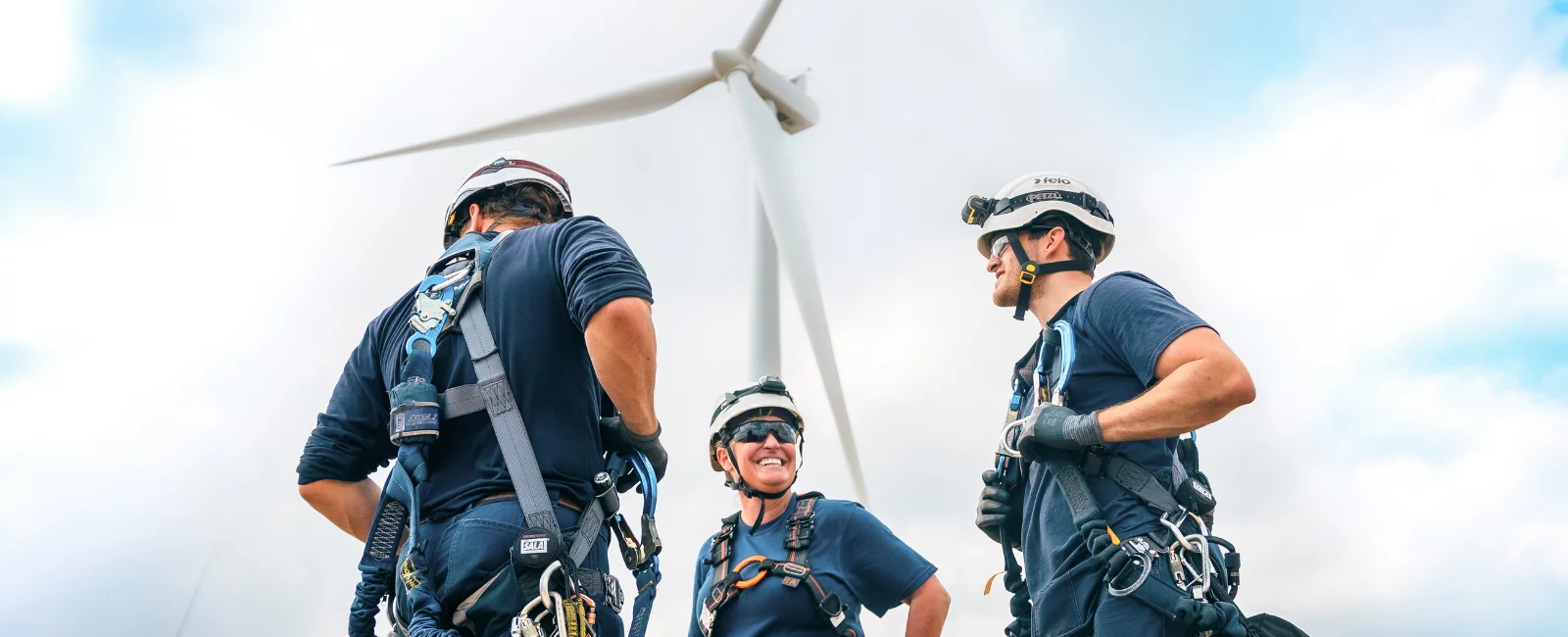1. Gearbox & Borescope Training
3-day practical course with turbine gearbox and borescope, in partnership with Evident Scientific
Course modules include:
Gearbox fundamentals: drive-train configurations, stages, gears & bearings, lubrication, filtration, cooling, and condition-monitoring systems
Inspection routines: external/internal checks, common damage modes, and reporting
Borescope operation: Olympus IPLEX overview (menus, specs), image capture, care, and troubleshooting
Hands-on diagnostics: guided use of borescope on real gearbox to detect wear and faults
Technician gains: Interpreting borescope visuals, spotting early issues, and writing clear inspection reports
Employer gains: Fewer catastrophic failures, better maintenance planning, and lower lifecycle costs
2. GWO CoHE (Control of Hazardous Energies) & NFPA 70E
Up to 4 days, combining CoHE & electrical safety to NFPA 70E
Course structure:
Basic Safety: hazard awareness, LOTO fundamentals
Electrical Safety: low-voltage procedures, energized work boundaries
Pressure-Fluid Module: hydraulics and fluid-pressure controls
QEW + NFPA 70E: electrical safe work zones, arc-flash boundaries, PPE protocols
Technician benefits: Enhanced safe isolation and LOTO proficiency, fluid pressure control, and electricity safety in turbines
Employer benefits: Improved OSHA/NFPA compliance, safer work procedures, reduced risk of arc-flashes
3. Solar Field Technician Training
Range of utility-scale modules
Typical content:
PV system components: panels, inverters, combiners, cabling
Troubleshooting electrical faults, performance testing, and safety checks
Maintenance, commissioning, and data logger operation
Technician gains: Proficiency in solar asset care and technical fault-finding
Employer gains: Cross-platform workforce, flexibility in deployment
4. Enhanced First Aid
3-day original / 2-day refresher GWO module
Focus areas:
Advanced trauma care: bleeding control, airway management, casualties with serious injuries
Medical priorities, evacuation protocols, equipment use
Simulation drills for remote-site emergencies
Technician gains: Confidence in critical incident response
Employer gains: Improved on-site emergency readiness and reduced rescue response times
5. GWO Lift + 3S Climb Assist System (CAS)
Modular course options (user, commissioning, inspection)
Key modules:
Lift operation: proper use, inspection, daily checks
3S CAS: commissioning, user & instructor cert
Maintenance protocols
Technician gains: Safe vertical-lift operations and climb-assist handling
Employer gains: Reduced human fatigue, safer tower access, less climb-related injuries
6. Competent Person (PPE Inspection, Fall Protection, Rescue)
Comprehensive course for on-site safety authority
Modules include:
PPE & Device Inspection: systematic check of harnesses, lanyards, helmets, fall arrest systems
Climbing & Fall Protection: hazard assessments, climb-assist use, system setup
Evacuation & Self-Rescue: Solo-X tool training and descent planning
Advanced Rescue (Red Pro): team rescue across hub, nacelle, blades
Technician gains: Elevated oversight capacity, rescue authority
Employer gains: OSHA/GWO compliance, improved rescue readiness, reduced gear failure risk
7. BOP Substation & PMT Switching
Balanced theory and practical focused on substations & pad-mount transformers
Core content:
Safe substation entry, protection principles
High/medium-voltage schematic reading (ANSI/IEEE)
Inspection, switching orders, zero-energy verification, applying grounds
Hands-on PMT switching + substation walkthroughs
Technician gains: Confidence in medium-voltage systems, schematic interpretation, safe switching
Employer gains: Safer switching ops, better regulatory alignment, minimized grid downtime
8. Total Wind Technician Training
End-to-end pathway: technical intro → OEM-level competency
Phases:
Half-day assessment
Basic Intro (5 days): AC/DC principles, motor controls, DMM, schematics, troubleshooting
Basic Intro Plus (11–12 days): Includes OEM-specific gear (GE, Vestas, Siemens) & gearbox/borescope
Bespoke modules: hydraulics, oscilloscope use, failure analysis, mechanical prints, lubrication, actuators
Technician gains: Tiered skill development from fundamentals to OEM-level expertise
Employer gains: Structured competency framework, apprenticeship alignment, improved technician performance
9. 3S CAS – Climb Assist System Only
Stand-alone 3S CAS user & trainer certification
Course focuses on:
Safe commissioning
Usage standards for climb systems
Trainer-level skills to teach others
Technician gains: Specialist climb-assist mastery
Employer gains: In-house instructors, higher climb compliance, reduced fall-related strain
10. IQT & IQTX Technician Programs
IQT = Initial Qualification Training
IQTX = Initial Qualification Training Crossover
Content Highlights:
IQT: 10-day full-spectrum technician prep (tools, turbine systems, electrical safety, mechanical components)
IQTX: 4–5 day condensed version for technicians with prior field or military experience
Modules include:Electrical theory, hydraulics, safety & rescue, troubleshooting fundamentals
Turbine orientation and practical systems testing
Technician Benefits:
Entry or re-entry into wind sector with verified, standardized skill sets
Employer Benefits:Quick deployment of competent new hires; robust foundational skills from day one
11. Lifeline Training – SOLO X + X RESQ System
Duration: 1 Day
Pre-requisites: GWO Working at Height + ART
Content Highlights:
Setup and hazard ID for secondary lifeline systems
Self-rescue using SOLO X device and vertical fall arrest (with ASAP absorber)
Assisted rescue of suspended workers using RPX system with X RESQ kit
Hands-on kit inspection: ropes, absorbers, slings, pulleys, and fall arresters
Calculating proper rope length and anchorage (5000 lbs per worker minimum)
Technician Gains:
Master self-rescue and two-person rescue using vertical lifelines
Safe rigging of static kernmantle rope systems and ASAP devices
Employer Gains:
Enhances rescue capabilities beyond standard fall arrest
Improves response time for suspended worker emergencies
Fulfills advanced fall protection protocol and manufacturer best practices
Summary Table
| Course | Duration | Key Focus | Technician Gains | Employer Impact |
|---|---|---|---|---|
| Gearbox & Borescope | 3 days | Diagnostics | Fault detection | Fewer gearbox failures |
| CoHE + NFPA 70E | 3–4 days | Hazardous Energy | Electrical safety | OSHA/NFPA compliance |
| Solar Training | Variable | PV systems | Hybrid expertise | Flexible deployment |
| Enhanced First Aid | 3 days | Remote trauma | Life-saving skills | Emergency readiness |
| Lift + CAS | Modular | Vertical access | Safe climbing | Fewer fall injuries |
| Competent Person | Multi-day | PPE & Rescue | Safety oversight | PPE compliance |
| Substation/PMT | 1–2 days | Electrical Ops | Switching skills | Grid protection |
| Total Wind | 5–12 days | Career path | Multi-system fluency | Skilled new hires |
| 3S CAS Only | 1 day | CAS skills | Climb assist ops | In-house trainers |
| IQT/IQTX | 4–10 days | Entry training | Field readiness | Fast-tracked hiring |
| Lifeline (X RESQ) | 1 day | Rescue system | Self/assisted rescue | Suspended worker safety |
Why These Courses Matter
Technicians Gain:
Hands-on skills in specialized diagnostics, electrical safety, and rescue procedures.
Stronger employability across wind, solar, and hybrid asset operations.
Empowerment and safety awareness, enabling confident field performance and career growth.
Employers Benefit From:
Increased uptime via early detection (borescope) and proficient switching/troubleshooting.
Improved safety compliance, reducing incident rates and costlier training gaps.
Skill, versatile teams able to work across energy platforms.
Structured workforce development, aligning with apprenticeships, GWO, and NFPA certifications.
Over the last 12 months, STL USA has significantly expanded its training roster to meet evolving industry needs—from gearbox borescope diagnostics to substation switching, solar capabilities, advanced rescue, and comprehensive wind technician development.
These additions empower technicians with practical, job-ready skills, while equipping employers with safer, more adaptable teams, and boosting asset uptime and safety compliance.
Need help matching your team with the right course? Get in touch with the STL USA team to build a customized training pathway!
Interested in learning more or booking anyone of these or the other courses on our roster?
Click the button to see all the courses available from STL USA

